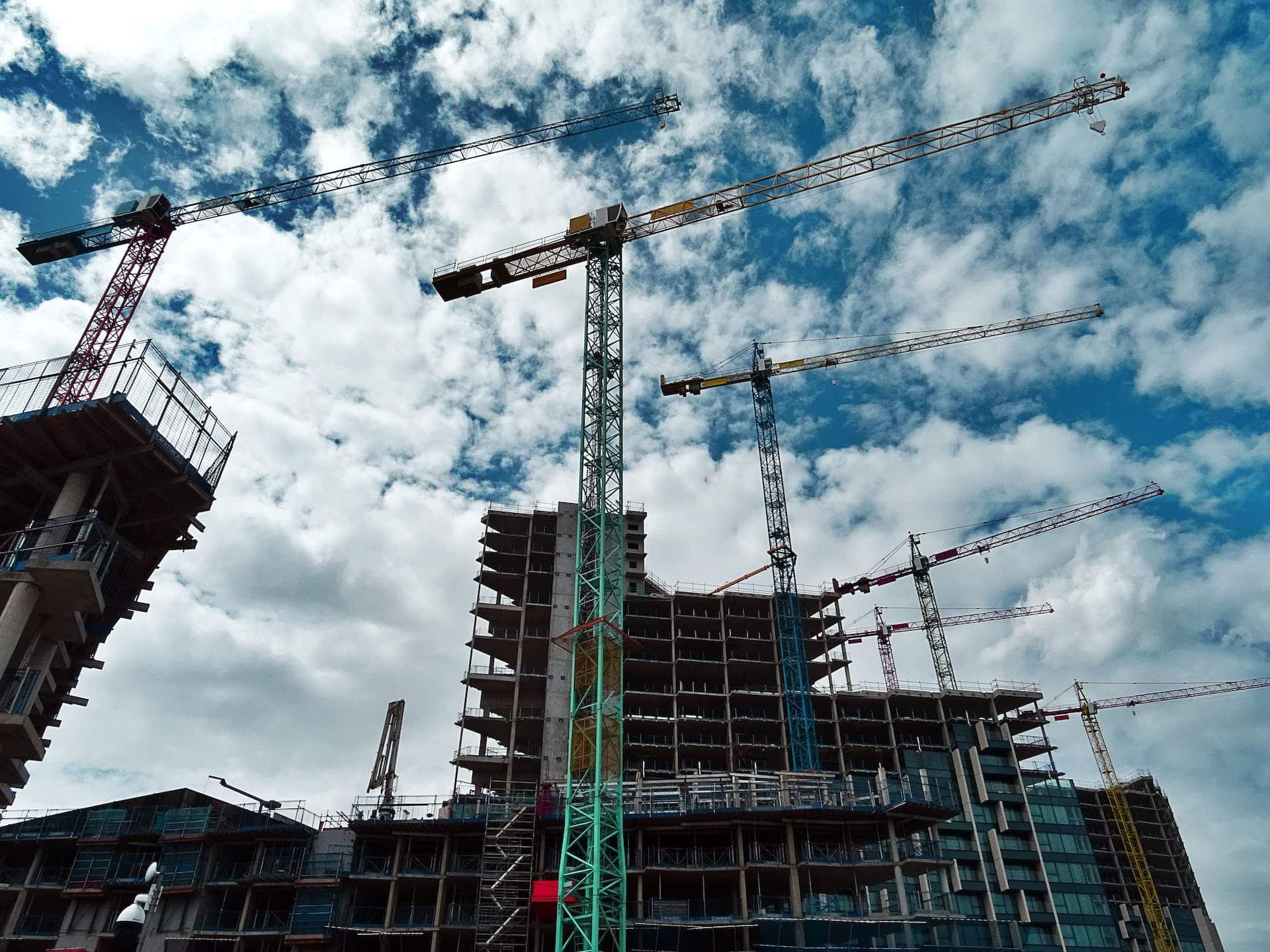In this day and age, the quest for sustainability is no longer just a buzzword, but a necessary shift in many industries, including real estate construction. The use of sustainable materials in the building industry is growing at an unprecedented rate. As the implications of climate change become more apparent, more and more builders are looking to minimize their environmental footprint. This article will delve into the emerging trends in the use of these eco-friendly materials. We will examine the types of materials being used, the reasons behind their growing popularity, and the benefits they offer to both the environment and the end-users.
Adopting Bio-Based Materials
This new era of construction is seeing an increased usage of bio-based materials. These are materials made from substances derived from living (or once-living) organisms. They include straw, bamboo, wood, and hemp, to name a few. The rise in their use can be attributed to their abundance, renewability, and low environmental impact.
A découvrir également : How to implement sustainable heating and cooling solutions in large-scale real estate projects?
Bio-based materials are not only eco-friendly but also energy-efficient. Their natural properties provide excellent insulation, which reduces the need for artificial heating and cooling systems. For example, straw-bale construction – a method that uses baled straw from wheat, oats, barley, rye, rice, and others in the walls of buildings – has been praised for its superb insulation properties.
The Comeback of Traditional Construction Techniques
In the quest for sustainability, builders are rediscovering and modernizing traditional construction techniques. These methods, which have been used for centuries, are making a comeback due to their low-cost, low-tech, and low-impact nature.
Dans le meme genre : What are the key considerations for developing real estate in areas with high tourism potential?
One of these revived techniques is rammed earth construction. This method involves compressing a mixture of damp earth, clay, sand, and gravel between a mold to form sturdy walls. Rammed earth buildings have excellent thermal mass, provide good insulation, and are resistant to fire and pests.
Another technique that is gaining momentum is cob construction. Cob is a mixture of earth, clay, straw, and water. It is hand-sculpted while wet and hardens as it dries. Cob buildings are cheap, easy to build, and highly sustainable.
Innovative Use of Recycled Materials
Another growing trend in sustainable construction is the innovative use of recycled materials. From using reclaimed wood for flooring and furniture to repurposing shipping containers into homes, the possibilities are limitless.
Builders are constantly looking for ways to reduce construction waste. One innovative solution is the use of recycled concrete aggregate (RCA). RCA is produced by crushing concrete reclaimed from demolished buildings or bridges. This material can then be used in new construction projects, reducing the need for virgin materials.
Waste plastic is another material being repurposed in construction. Companies have developed ways to convert waste plastic into bricks or panels. These recycled plastic bricks are not only durable and lightweight, but they also offer excellent insulation properties.
Incorporating Green Technology
The integration of green technology into construction projects is also on the rise. This trend involves the use of technology to enhance the sustainability and energy-efficiency of buildings. From solar panels and wind turbines to rainwater collection systems, these technologies ensure that the buildings generate as much energy as they consume – or even more.
One exciting development in this area is the creation of “smart windows.” These windows can automatically adjust their tint in response to changes in light, reducing the need for artificial lighting and air conditioning. This technology not only saves energy but also enhances comfort for the occupants.
The Rise of Green Certifications
To encourage sustainability in real estate construction, various green certifications have been established. These certifications provide a benchmark for sustainability and assure potential buyers that the property meets certain environmental standards.
One of the most popular green certifications is the Leadership in Energy and Environmental Design (LEED) certification. LEED-certified buildings are designed to be energy-efficient, water-efficient, and to reduce CO2 emissions. They also consider factors like indoor environmental quality and resource selection.
As the demand for eco-friendly living spaces continues to grow, these green certifications are becoming a requirement rather than a luxury. They not only increase the property’s market value but also reduce its operating costs in the long run.
In conclusion, as humankind grapples with environmental challenges, the need for sustainable solutions in all sectors, including real estate construction, becomes more urgent. The trends discussed in this article show that the construction industry is heeding this call by embracing sustainable materials and techniques. Whether it’s bio-based materials, recycled materials, traditional construction techniques, green technology, or green certifications, the future of real estate construction is undeniably green.
The Emergence of Modular and Off-Site Construction
Modular construction, also known as off-site construction, is a trend that is gaining traction in the pursuit of sustainable building. Modular construction involves assembling sections of a building at a factory and then transporting them to the construction site. This method is not only faster and more efficient than traditional construction, but it also significantly reduces waste.
By pre-fabricating parts of a building off-site, builders can control the conditions in which they are constructed. This not only enhances the quality of the components but also reduces the amount of waste produced. It also allows for precise measurements, which minimizes errors and rework at the site. The factory-controlled process ensures that the materials are protected from potential damage due to adverse weather conditions.
In addition to reducing waste, modular construction can also reduce the energy consumption of a building. By building sections in a factory, energy usage can be monitored more closely, and energy-efficient materials and techniques can be incorporated more easily. Modular buildings can also be designed to be disassembled and reused, further contributing to their sustainability.
Moreover, the speed of modular construction means that buildings can be completed more quickly, reducing the energy and resources used during the construction process. This speed also means that occupants can move into the building sooner, reducing the need for temporary accommodation and associated environmental impacts.
Utilizing Natural Light and Ventilation
The use of natural light and ventilation is another emerging trend in sustainable real estate construction. By taking advantage of natural light and ventilation, builders can significantly reduce the energy consumption of a building.
To maximize the use of natural light, builders are designing buildings with large windows, skylights, and open floor plans. These design choices allow sunlight to penetrate deep into the building, reducing the need for artificial lighting during the day.
Similarly, incorporating natural ventilation into building design can reduce the need for air conditioning and other mechanical systems. By designing the building to take advantage of wind patterns and temperature differences, builders can create a comfortable indoor environment without relying on energy-intensive systems.
To encourage the use of natural light and ventilation, many green certifications, such as LEED, give points for these design features. As a result, buildings that utilize these techniques not only save energy but also improve the wellbeing of their occupants by providing a more comfortable and healthier indoor environment.
Conclusion
As we continue to face the challenges of climate change, the role of sustainable real estate construction becomes increasingly important. The emerging trends in the use of sustainable materials, such as bio-based materials, recycled materials, and modular construction, demonstrate the industry’s commitment to reducing its environmental impact. Furthermore, the adoption of traditional construction techniques, the integration of green technology, and the focus on natural light and ventilation highlight the industry’s innovative approach to sustainable building.
However, to truly realize the potential of these trends, it is crucial that they become the norm rather than the exception. This will require ongoing innovation, education, and regulation. But, with the continued growth of green certifications and the rising demand for sustainable living spaces, the future of real estate construction is undoubtedly sustainable.











